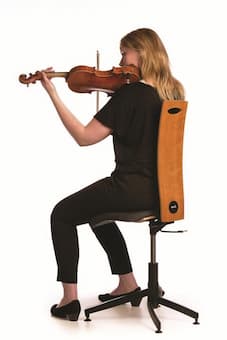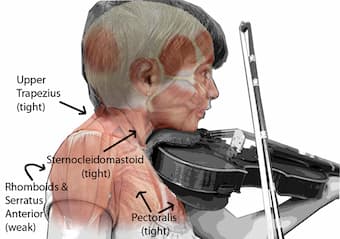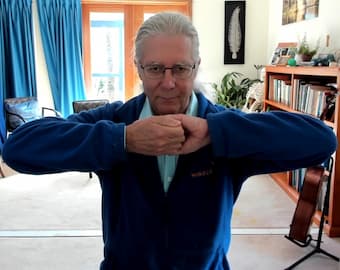
© The Strad
“Lighter”, “easier”, “freer”, “weird”. These are the sort of things musicians (and others) say as they improve the way they sit and stand to play. It is not unusual for a real change in postural support to completely change the way the instrument, the fingers or the voice feel, and the ability to play challenging things may become surprisingly easy.
This is the second in our series of articles from BodyMinded in Australia, addressing questions of coordination and control in performing, learning and teaching music. Attending to your coordination in a well-informed way can assist with removing stress and pressure, recovering from injury in order to return to playing, and improving your skill as a performer.
I have a list of questions arising from musicians and music teachers which we will endeavour to address with practical activities and explorations. You can send a request if you have any particular question of interest to you.
We began the series with one of the fundamentals of coordinated hand and arm movement: extending the definition of the word “arm” to specifically include the movements of the shoulder girdle. This time we will begin with the fundamentals of postural support in sitting and standing.
Take a moment to evaluate how you are sitting or standing at the moment. You may discover yourself doing any number of interesting things. If you change your position your sensations of muscle activity will change, along with the sense of pressure under you.
Gravity Pulls Down, Support Points Up
Postural support involves a continuously moving support of the parts of your body by both muscles and bones. There is muscle activity all over your body contributing to this postural support. If you consciously ‘relax’ a little, the parts of the body will begin to fall a little towards the earth, you may feel a bit heavier, and your joints may become a little looser. If you do the opposite and attempt to ‘sit up’ or ‘stand taller’ there will generally be a stiffening of the body, which may include a subtle lifting of your chest and changes in your breathing.
Take another moment to observe how you go about preparing to play or to sing. Do you start with a tendency to collapse or a tendency to stiffen? Do you go up or down in your body?

The whole body as a system is supported by, and balancing over, the surface underneath you (the seat, the floor etc). The basic physics of balance are well known. Balance is where the ‘centre of gravity’ is moving over the ‘base of support’ (COG over BOS). This simply means that if you are leaning in any direction away from the support that is under you the muscles will have to work harder in a supporting role to prevent you from falling1.
Putting these two things together, the first clue to improving the way you sit and stand, is to think of being moveable within your body while being supported by the chair, floor or other support under you. Stiffening anywhere in the body interferes with the natural ‘self-organising’ nature of dynamic postural support. Consciously trusting the chair or the floor to do its job of supporting you stops you from trying to actively ‘hold yourself up’, letting the natural mechanisms of ‘antigravity support’ do their job.
Gravity works, it constantly pulls you and all your parts towards the earth. Support is dynamic (moveable), it lifts you away from the earth.
Gravity pulls Down, Support points Up
How Can You Use This Knowledge?
Let’s do some experiments to illustrate how you can use this knowledge to improve the way you sit and stand and how you support your instrument or your arms as you play.
Find an object you can lift up. For example, an instrument in an instrument case, or anything else handy. As you lift the object, think about its weight as you lift it up. Then put it back down. Now think about supporting the object as you lift it. Compare the experience of these two movements, how are they different? How about carrying a weighty object or bag across the room. How is it different if you think of supporting the object as you carry it, compared to thinking about the weight of the object as you carry it?
When you are thinking of the weight of something, you are orienting your idea of movement downwards. When you are thinking of the support of something, your idea of movement orients upwards. The postural support mechanisms respond to these orientations by automatically decreasing or increasing muscle activity. Hence the simple thought of support changes the sensation of doing the action. Now let’s see what happens when you apply this thinking to the movement of your body in space.
Choose a movement activity, standing from a chair, lifting an instrument, or reaching for something for example. Think about the weight of the body and/or instrument and notice what happens as you do the action, then think about the support of the body and/or instrument and notice how things change as you do the action.
Improving the way you sit and stand, begins with simply remembering this. If you are feeling heavy and fatigued, think about the direction of support rather than the sensation of weight. If you are feeling stiff and awkward, think about the movability of the body in relation to the support of the chair or the floor.
You are not responsible for gravity; it looks after itself “gravity works”. You are, however, responsible for how you respond to gravity.
For more of the best in classical music, sign up to our E-Newsletter
Dynamic Postural Support




